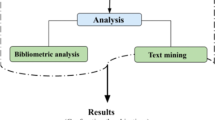Abstract
Ground level ozone is a major air pollutant with known toxic effects on humans. The research field is well established with many scientists from developed and developing countries contributing original research articles. Strict regulations for ozone air pollution are being implemented worldwide based on supporting scientific literature. In this scientometric analysis, we have analyzed the research trends in the field of ozone air pollution during 2011–2019. The collected SCOPUS data was analyzed using common scientometric analysis methods for known indicators to identify top ten rankings and scientific collaborations important for the field. Our result demonstrates that the USA is leading the field as USEPA and American regulatory authorities have funded most of the research. Two scientists, Russell A.G. and Schwartz J., working in American institutions, are leading with the most publications. Our assessment of ozone and PM together shows a significant impact on research direction in the last years to accommodate the study of both air pollutants together. In addition, we have analyzed the possible disease trends in the field for the last 3 years and identified that cardiovascular system, nervous system, and diabetes are upcoming disease areas that would be studied in the coming future.








Similar content being viewed by others
References
Analitis A, de’ Donato F., Scortichini M., Lanki T., Basagana X., Ballester F., Astrom C., Paldy A., Pascal M., Gasparrini A., Michelozzi P., Katsouyanni K. (2018) Synergistic Effects of Ambient Temperature and Air Pollution on Health in Europe: Results from the PHASE Project. Int J Environ Res Public Health 15 doi:https://doi.org/10.3390/ijerph15091856
Chen B, Kan H (2008) Air pollution and population health: a global challenge. Environ Health Prev Med 13:94–101. https://doi.org/10.1007/s12199-007-0018-5
Gonzalez-Guevara E, Martinez-Lazcano JC, Custodio V, Hernandez-Ceron M, Rubio C, Paz C (2014) Exposure to ozone induces a systemic inflammatory response: possible source of the neurological alterations induced by this gas. Inhal Toxicol 26:485–491. https://doi.org/10.3109/08958378.2014.922648
Gordon T, Balakrishnan K, Dey S, Rajagopalan S, Thornburg J, Thurston G, Agrawal A, Collman G, Guleria R, Limaye S, Salvi S, Kilaru V, Nadadur S (2018) Air pollution health research priorities for India: perspectives of the Indo-U.S. Communities of Researchers Environ Int 119:100–108. https://doi.org/10.1016/j.envint.2018.06.013
IARC (2016) Outdoor air pollution: IARC monographs on the evaluation of carcinogenic risks to humans
Laumbach RJ (2010) Outdoor air pollutants and patient health. American Family Physician 81:175
Madronich S, Shao M, Wilson SR, Solomon KR, Longstreth JD, Tang XY (2015) Changes in air quality and tropospheric composition due to depletion of stratospheric ozone and interactions with changing climate: implications for human and environmental health. Photochem Photobiol Sci 14:149–169. https://doi.org/10.1039/c4pp90037e
Poma A, Colafarina S, Aruffo E, Zarivi O, Bonfigli A, Di Bucchianico S, Di Carlo P (2017) Effects of ozone exposure on human epithelial adenocarcinoma and normal fibroblasts cells. PLoS One 12:e0184519. https://doi.org/10.1371/journal.pone.0184519
Stenfors N et al (2010) Ozone exposure enhances mast-cell inflammation in asthmatic airways despite inhaled corticosteroid therapy. Inhal Toxicol 22:133–139. https://doi.org/10.3109/08958370903005736
Weinhold B (2008) Ozone nation: EPA standard panned by the people. National Institute of Environmental Health Sciences
Yang LE, Hoffmann P, Scheffran J (2017) Health impacts of smog pollution: the human dimensions of exposure. The Lancet Planetary Health 1:e132–e133
Acknowledgments
G.K. conceptualized the study. G.K. collected the data. A.K.S. analyzed the data and scientific literature and produced the figures and Tables. A.K.S. wrote the first draft with valuable inputs from G.K. G.K. edited and refined the final draft.
Funding
This research received no external funding.
Author information
Authors and Affiliations
Corresponding author
Ethics declarations
Conflict of interest
The authors declare that they have no conflict of interest.
Additional information
Responsible editor: Philippe Garrigues
Publisher’s note
Springer Nature remains neutral with regard to jurisdictional claims in published maps and institutional affiliations.
Electronic supplementary material
ESM 1
(DOCX 21 kb)
Rights and permissions
About this article
Cite this article
Sharma, A.K., Kaur, G. Scientometric analysis: identification of research trends for ozone as an air pollutant for 2011–2019. Environ Sci Pollut Res 27, 38568–38579 (2020). https://doi.org/10.1007/s11356-020-09941-4
Received:
Accepted:
Published:
Issue Date:
DOI: https://doi.org/10.1007/s11356-020-09941-4




